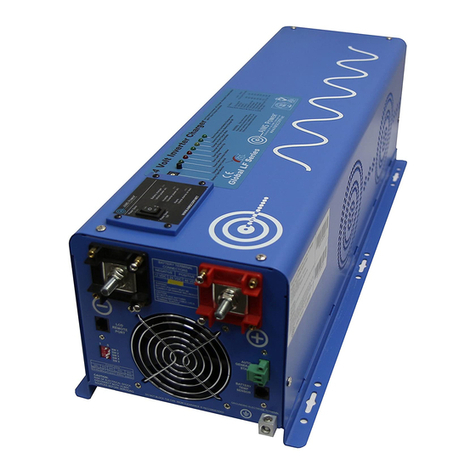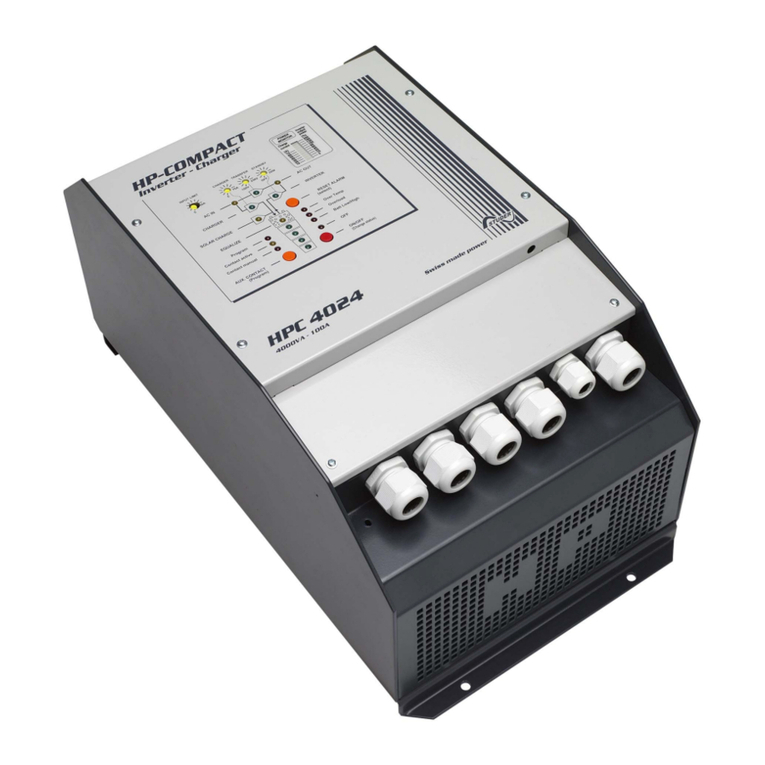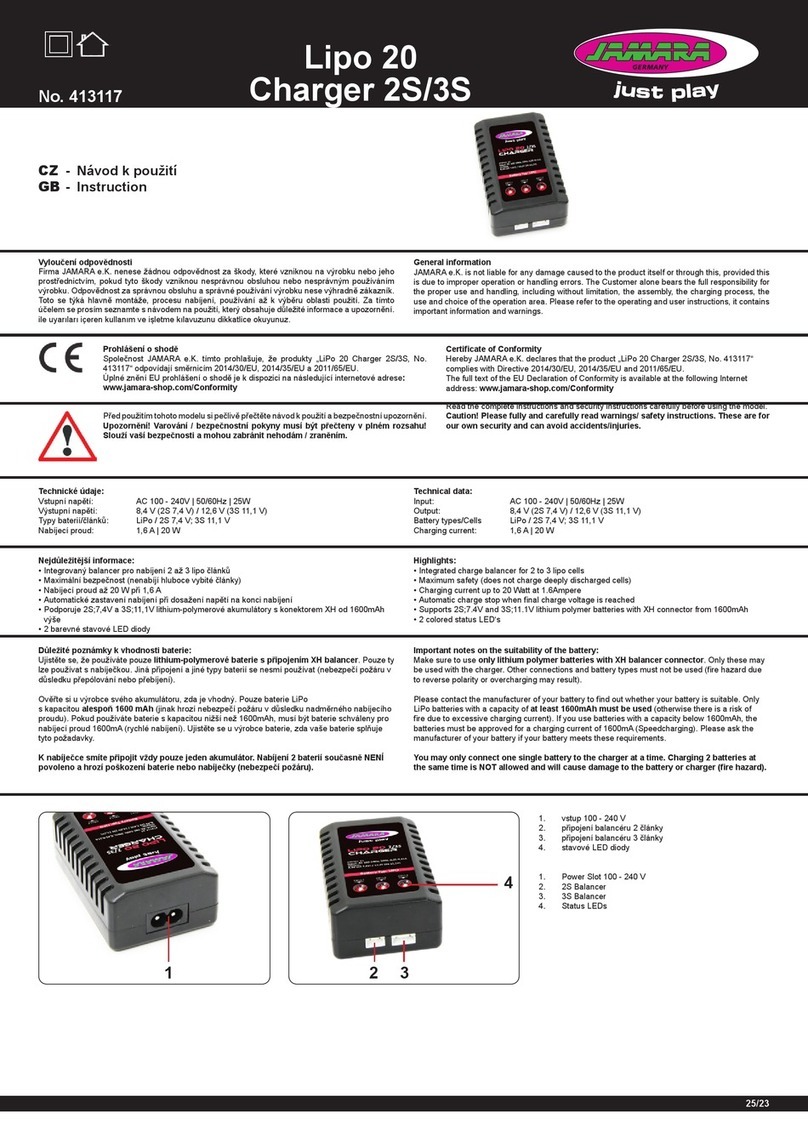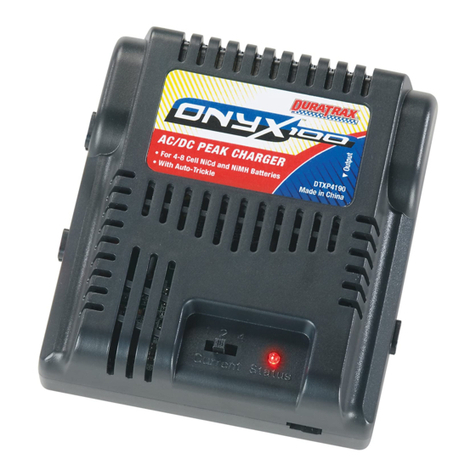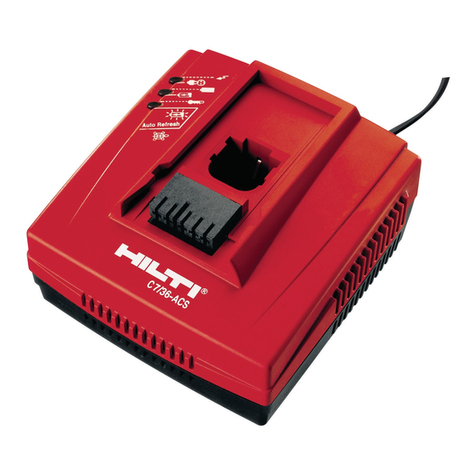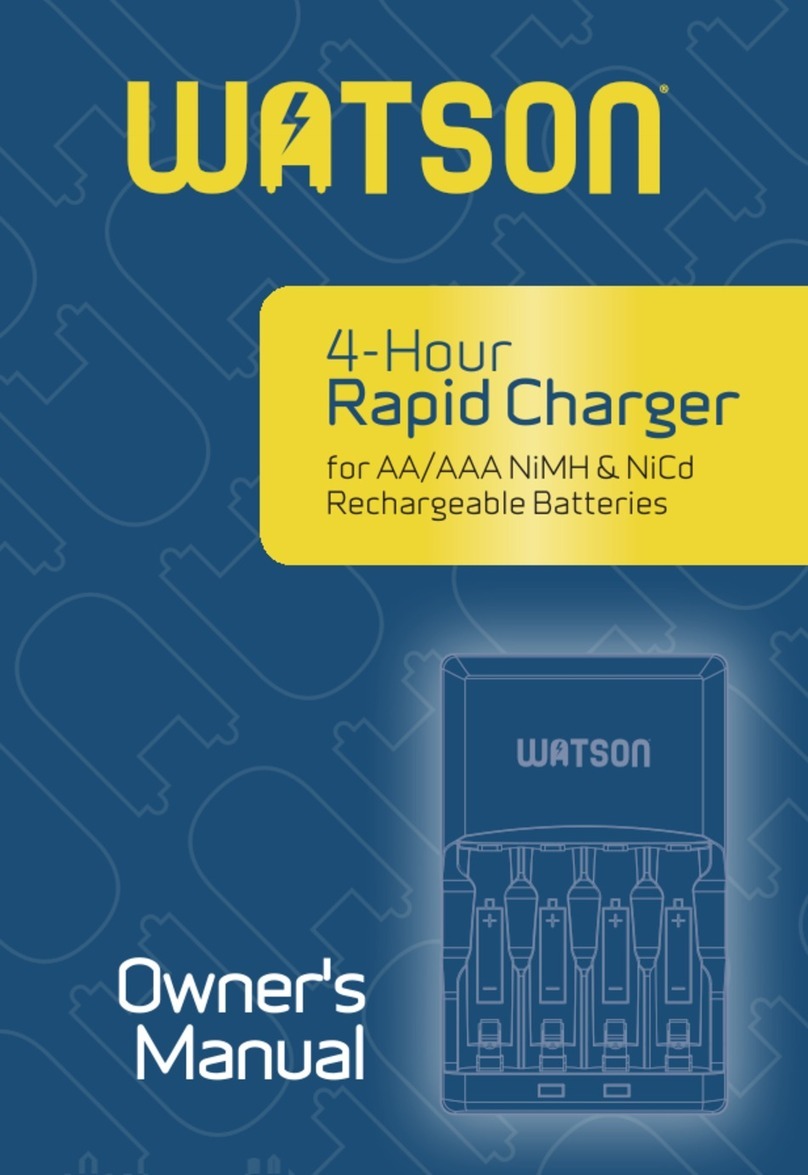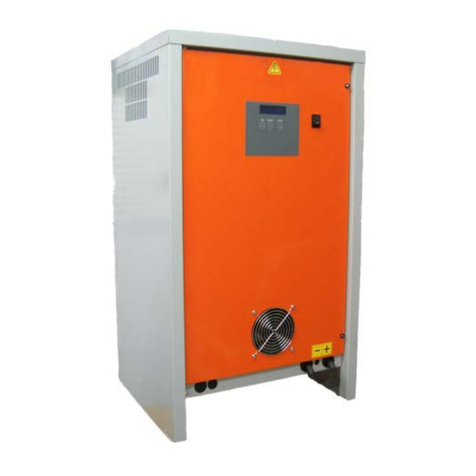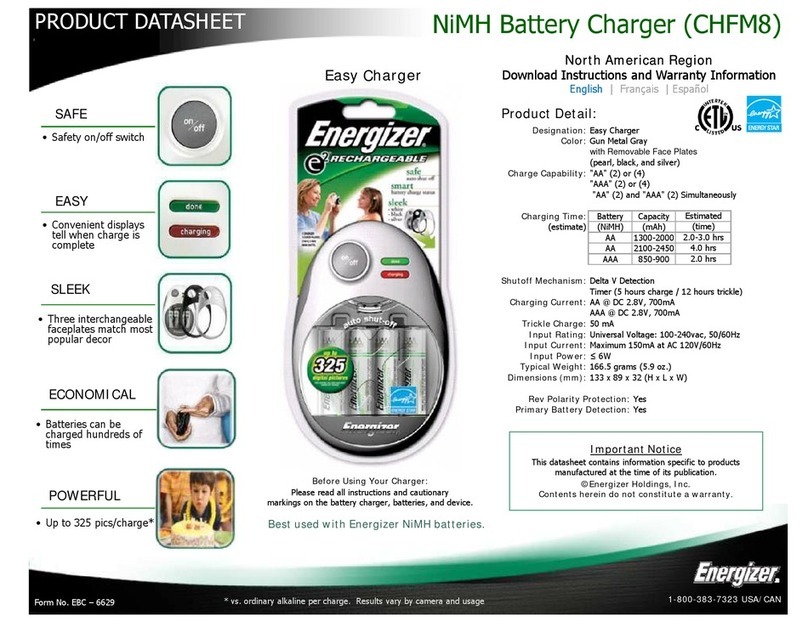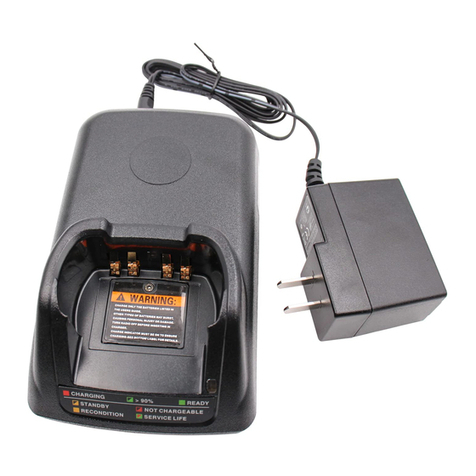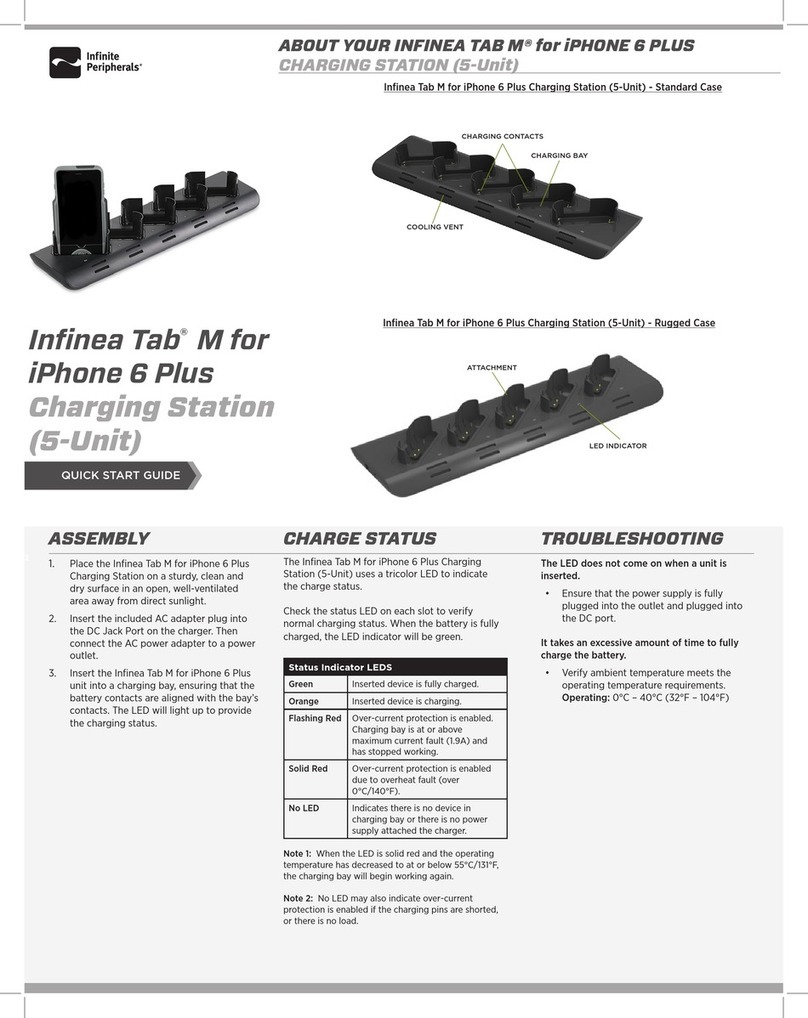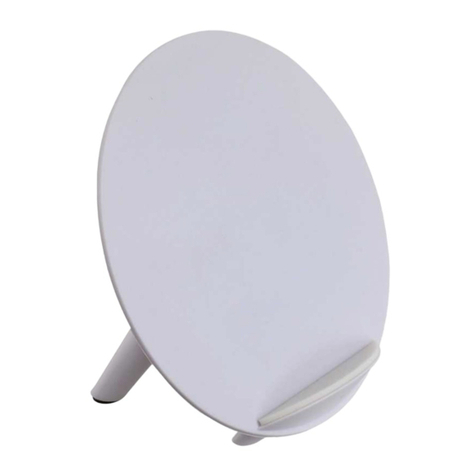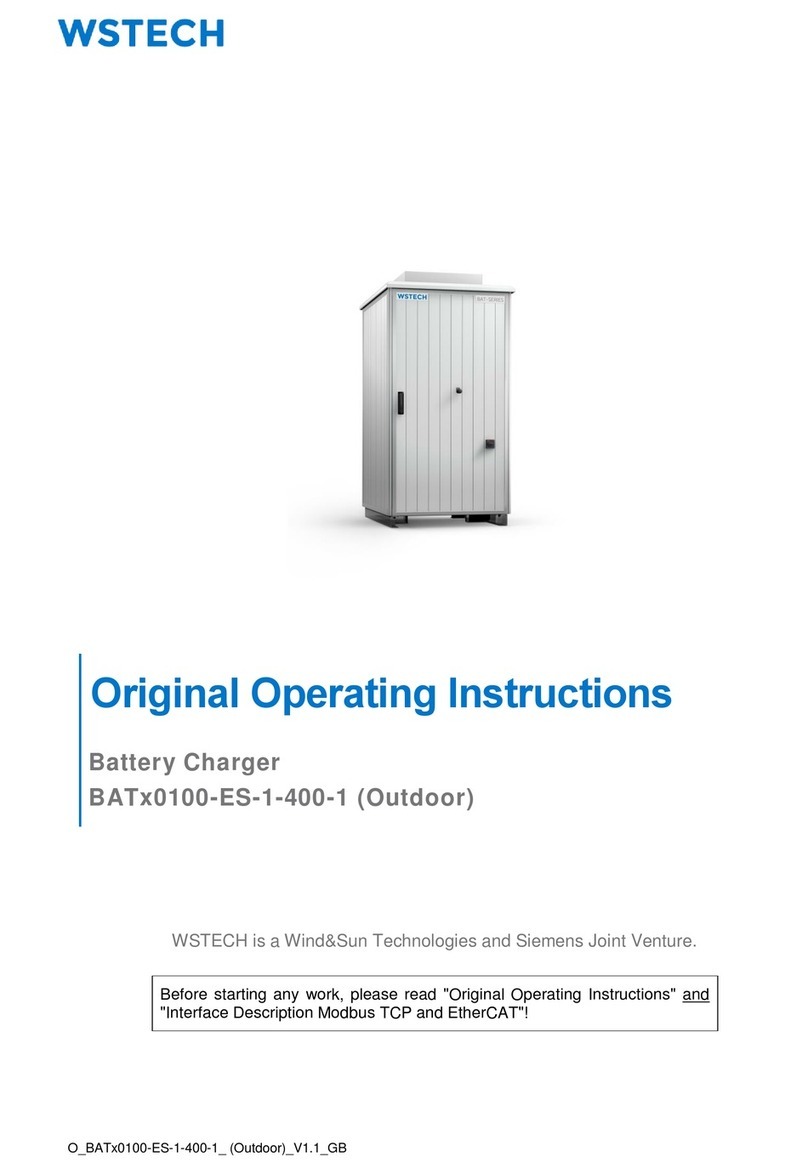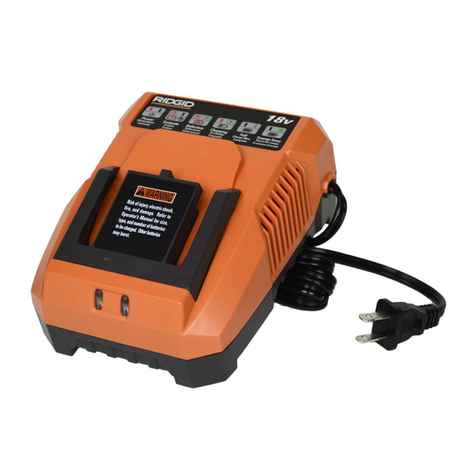SC POWER SC120 User manual

1
INSTRUCTION MANUAL
SC120 SMART BATTERY CHARGER FOR
AGM, GEL & CONVENTIONAL
THIS MANUAL CONTAINS IMPORTANT SAFETY AND OPERATING INSTRUCTIONS. PLEASE SAVE THESE
INSTRUCTIONS. KEEP WITH OR NEAR CHARGER AT ALL TIMES.
1. WARNING —RISK OF EXPLOSIVE GASES.
a. Working in the vicinity of a lead-acid battery can be dangerous. Batteries generate explosive
gases during normal battery operation.
b. For this reason, it is of the utmost importance that prior to each use of your charger, you read
and follow the instructions provided exactly
c. The appliance is not intended for use by young children or infirm persons without
supervision. Young Children should be supervised to ensure that they do not play with the
appliance.
2. To reduce risk of a battery explosion, follow these instructions and those marked on the battery.
3. NEVER smoke or allow an open spark or flame in the vicinity of the battery or engine.
4. CAUTION—To reduce the risk of injury, use the charger for charging a rechargeable lead-acid battery
only. It is not intended to supply power to a low-voltage electrical system or to charge dry-cell
batteries. Charging dry-cell batteries may cause them to burst and cause injury to persons and
damage to property.
5. Do not expose the charger to moisture, rain or snow. For indoor use only.
6. Use of an attachment not recommended or sold by the battery charger manufacturer may result in a
risk of fire, electric shock, or injury to persons.
7. To reduce risk of damage to electric plug and cord, pull by plug rather than cord when disconnecting
the charger.
8. Make sure cord is located so that it cannot be stepped on, tripped over, or otherwise subjected to
damage or stress.
9. Study all the battery manufacturers' specific precautions such as removing or not removing cell caps
while charging and recommended rates of charge.
10. Do not use the battery charger unless the battery voltage matches the output voltage rating of the
charger.
11. Do not operate the charger in a closed-in area or restrict ventilation in any way.
12. Do not operate the charger with damaged cord or plug. If the supply cord cannot be replaced and
the cord is damaged, the appliance should be scrapped.
13. Do not operate the charger if it has received a sharp blow, been dropped, or otherwise damaged in
any way. Take it to a qualified repair station or local dealer.
14. Do not disassemble the charger. Take it to a qualified repair station or local dealer when service or
repair is required. Incorrect reassembly may result in a risk of electric shock or fire.
15. To reduce risk of electric shock, unplug the charger from an outlet before attempting any
maintenance or cleaning.
16. This product is not intended for use by persons with physical or mental disabilities children and
persons with limited experience and knowledge, without supervision or instruction on the use of the
device through a person responsible for their safety.
17. If the power cable is damaged, it must be replaced by the manufacturer, its after-sales service or
qualified persons to avoid danger.
18. Connection
•The charger must be connected to an earthed power supply.

2
•The connection to the power supply must be carried out in compliance with national standards.
•The appliance incorporates an earth connection for functional purposes only.
Important notice: DO NOT use other DC output cords than the one supplied or use an extension cords as it
could result in damage to the unit which will not be covered by warranty.
PERSONAL PRECAUTIONS:
a. Someone should be within range of your voice or close enough to come to your aid when you work
near a lead-acid battery.
b. Have plenty of fresh water and soap nearby in case battery acid contacts skin, clothing, or eyes.
c. Wear complete eye protection and clothing protection. Avoid touching eyes while working near
battery.
d. If battery acid contacts skin or clothing, wash immediately with soap and water. If acid enters an eye,
immediately flood eye with running cold water for at least 10 minutes and get medical attention
immediately.
e. NEVER smoke or allow a spark or flame in vicinity of battery or engine.
f. Be extra cautious to reduce risk of dropping a metal tool onto battery. It might spark or short-circuit
battery or other electrical part that may cause an explosion.
g. Remove personal metal items such as rings, bracelets, necklaces, and watches when working with a
lead-acid battery. A lead-acid battery can produce a short-circuited current high enough to weld a
ring or like to metal, causing a severe burn.
h. It is not intended to supply power to a low-voltage electrical system or to charge dry-cell batteries.
Charging dry-cell batteries may cause them to burst and cause injury to persons and/or damage to
property.
i. NEVER charge a frozen battery.
PREPARING TO CHARGE
a. If it is necessary to remove battery from vehicle to charge it, always remove grounded terminal from
battery first. Make sure all accessories in the vehicle are off in order to prevent an arc.
b. Be sure area around battery is well ventilated while battery is being charged. Explosive gas can be
forcefully blown away by using a piece of cardboard or other nonmetallic material as a fan.
c. Clean battery terminals. Be careful to keep corrosion from coming in contact with eyes.
d. If battery is not sealed, add distilled water in each cell until battery acid reaches level specified by
battery manufacturer. This helps purge excessive gas from cells. Do not overfill. For a sealed battery
or a battery without cell caps, carefully follow manufacturers’ recharging instructions.
e. Study all battery manufacturers' specific precautions such as removing or not removing cell caps
while charging and recommended rates of charge.
f. Determine voltage of battery by referring to vehicle owner’s manual and make sure it matches
output rating of the battery charger.
LOCATE CHARGER
a. Locate the charger as far away from battery as the DC cables permit.
b. Never place the charger directly above or below the battery being charged. Gases or fluids from the
battery will corrode and damage the charger.
c. Never allow battery acid to drip on the charger when reading gravity or filling battery.
d. Do not operate charger in a closed-in area or restrict ventilation in any way.
e. Do not set a battery on top of charger.
CONNECTION PRECAUTIONS

3
Connect and disconnect DC output clips only after setting the charger switches to off position and removing
AC cord from the electric outlet. Never allow clips to touch each other.
1. Follow these steps when battery is installed in a vehicle. A spark near battery may cause a battery
explosion. To reduce risk of a spark near battery:
a. Position AC and DC cords to reduce risk of damage by hood, door or any moving engine parts.
b. Stay clear of fan blades, belts, pulleys, and other parts that can cause injury to persons.
c. Check polarity of battery posts. A positive (pos, +) battery post may have a larger diameter
than a negative (neg, -) post.
d. Determine which post of battery is grounded (connected) to the chassis. If negative post is
grounded to the chassis (as in most vehicles), see item (e). If positive post is grounded to the
chassis, see item (f).
e. For a negative-grounded vehicle, connect the positive (red) clip from the battery charger to
the positive (pos, +) post of battery first. Connect the negative (black) clip from the battery
charger to the vehicle chassis of engine block remote from the battery and fuel line. Do not
connect the clip to carburetor, fuel lines, or sheet-metal body parts. Connect to a heavy
gauge metal part of the frame or engine block.
f. For a positive-grounded vehicle, connect the negative (black) clip from the battery charger to
negative (neg, -) post of battery first. Connect the positive (red) clip from the battery charger
to the vehicle chassis or engine block remote from the battery and fuel line. Do not connect
clip to carburetor, fuel lines, or sheet-metal body parts. Connect to a heavy gauge metal part
of the frame or engine block.
g. If using permanently mounted eyelet lead SAE connector, simply connect to charger output
lead.
h. Connect charger AC supply cord to an electric outlet.
i. When disconnecting the charger, disconnect AC cord, remove clip from vehicle chassis, and
then remove clip from battery terminal.
j. See operating instructions for length of charge information.
2. Follow these steps when battery is outside the vehicle. A spark near the battery may cause a battery
explosion. To reduce risk of a spark near battery:
a. Check polarity of battery posts. A positive (pos, +) battery post may have a larger diameter
than a negative (neg, -) post.
b. Attach at least a 1.8m long 0.75mm’ insulated battery output cable of charger to the negative
(neg, -) battery post.
c. Connect the positive (red) clip from the battery charger to the positive (pos, +) post of
battery.
d. Position yourself and the free end of cable as far away from battery as possible, then connect
negative (black) clip from the battery charger to free end of cable.
e. Do not face battery when making final connection.
f. Connect charger AC supply cord to an electric outlet.
g. When disconnecting the charger, always do so in reverse sequence of connecting procedure
and break first connection while standing as far away from battery as practical.
h. A marine (boat) battery must be removed and charged on shore. To charge it on boat
requires equipment specially designed for marine use.
OPERATING INSTRUCTIONS:
AUTOMATIC MONITORING - Your new battery charger is completely automatic and can be left on whenever
input power is made available to the charger. The charger output depends on the condition of the battery it

4
is charging. When the battery is fully charged, the indicating light will turn green and the charger will switch
itself to a storage charge mode and will automatically monitor and maintain the battery at full charge.
CABLE CONNECTIONS: Your new battery charger is equipped with two output leads, a red positive (+) lead,
and a black negative (-) clip lead and a ring terminal cable. Always connect or disconnect the output leads
before plugging into AC power.
For all battery types: Connect the red positive (+) lead to the positive terminal of the battery. Connect the
black negative (-) lead to the negative terminal of the battery.
NOTE: If the charger is left connected to a lead acid battery for long periods of time, check water levels
periodically as directed by the battery manufacturer to ensure electrolyte is maintained at proper level.
ATTENTION: THE BATTERY CHARGER HAS A SPARK FREE, WRONG POLARITY & SHORT CIRCUIT PROTECTION
CIRCUITRY BUILT IN - BUT AS A GOOD PRACTICE, NEVER ALLOW THE TWO CLIPS TOUCH EACH OTHER.
The Battery Charger will not produce voltage (turn on) until it recognizes at least four volts from the battery.
The battery charger clips must be clipped to a battery in the correct polarity to initiate output voltage and
begin charging
If the charger is hooked up in reverse polarity, the “Reverse Polarity" light will flash indicating that the
connection has been made in reverse of the polarity of the battery and a charge has not been initiated. The
clips must be re-connected in the proper polarity to start the charger, Red to Positive (+ to +) and Black to
Negative (- to -).
NOTE: DO NOT TURN YOUR BATTERY CHARGER ON AND OFF REPEATEDLY (Plug and Unplug) WITHIN A
SHORT PERIOD. IF THIS HAPPENS, UNPLUG BATTERY CHARGER FROM AC POWER, WAIT FOR ONE MINUTE
AND THEN CONNECT THE CHARGER AGAIN TO RESTART CHARGING CYCLE.
FULLY DISCHARGED BATTERIES:
If your battery is totally discharged (below 4 volts), the BATTERY CHARGER circuitry will not start due to its
internal safety circuit. The internal safety circuit of the battery charger must sense more than 4 volts in the
battery before it will allow the charging circuit to turn on. Otherwise, the charger is inoperable. In this case
(battery voltage between 0.5V 4.0V), the Indicator Light will flash, which means charging has not been
initiated. If the battery voltage is less than 0.5V, the charger will be returning to STANDBY mode.
Note: Unless the battery was rapidly discharged (lights left on overnight) most 12-volt lead acid batteries
that are at a state of charge that is less than 9 volts are likely to be worn out or defective.
72-HOUR SAFETY FEATURE:
A 72-hour Safety Timer will commence anytime the charger is on. This feature is designed to protect
marginal batteries from over charging. If the battery voltage reaches the proper level within 72 hours, the
charger will automatically switch to maintenance mode. If your battery is marginal or defective, the Battery
Charger will stop all the charging processes in order to protect the marginal battery from over charging.
Please check battery condition as it could also indicate that a very large (high capacity) but good battery is
simply not yet fully charged. When this happens, the bad battery indicator will be flashing. If this is the case,
please contact your local dealer and have the battery tested.

5
SELECTION FOR BATTERY TYPE
A.C. power is connected with the wall socket properly
Press MODE button for battery charge mode selection before you connect the charger to the battery
terminals.
LIGHT INDICATION:
1)
Battery charging mode :
LED SIGNAL
EXPLANATION
POWER
A.C. power is connected with the wall socket properly, it will enter into
standby mode. Standby: POWER LED is flashing; Charging: POWER LED is
glowing.
LED Signal
Description
POWER
AC power is connected with the wall socket properly, it will
enter into standby mode. Standby: POWER LED is flashing.
Charging: POWER LED glowing.
MODE
Press the MODE button for the selection of charging
program.
6V3A
The charger is switched to traditional lead acid battery charging
mode with maximum current 3A
12V 3A
The charger is switched to traditional lead acid battery charging
mode with maximum current 3A
12V 6A
The charger is switched to traditional lead acid battery charging
mode with maximum current 6A
12V 12A
The charger is switched to traditional lead acid battery charging
mode with maximum current 12A
24V 3A
The charger is switched to traditional lead acid battery charging
mode with maximum current 3A
24V6A
The charger is switched to traditional lead acid battery charging
mode with maximum current 6A
LED Signal
Description
6V 3A
6V lead acid battery charge mode at 3A
max.
TRADITIONAL
BATTERY AGM,GEL &
CONVENTIONAL
12V 3A
12V lead acid battery charge mode at 3A
max.
12V 6A
12V lead acid battery charge mode at 6A
max.
12V 12A
12V lead acid battery charge mode at
12A max.
24V 3A
24V lead acid battery charge mode at 3A
max.
24V 6A
24V lead acid battery charge mode at 6A
max.

6
Battery is connected in reverse polarity, please check the
battery connection(s) and correct reverse polarity
condition. Make sure Red to “+” and Black to “-“
The battery is worm out or is possibly defective. Suggest
replacing battery ASAP
RECOVERY
Battery Recovery processes will commence if the charger detects any
charge acceptance problems. Recovery processes include Battery
Rescue Phase. Once the Recovery processes are completed, normal
charge will commence immediately. For 12V Lead Acid Battery ONLY)
CHARGING
Normal charge processes are commenced. The Charger is delivering
constant current & voltage to the battery. To charge large capacity
batteries the charger may remain in this mode for several hours or
even days. The Charging LED turns on whenever the charging program
is commenced and turn off once reaches 80%
100%
CHARGE /
MAINTENANCE
The charging process is completed and the battery is in maintenance
mode, It can be returned to service if necessary or left safely
connected to the charger indefinitely. The LED will be flashing while
approaching fully charged and glowing in fully charge or maintenance
stage.
LIGHT INDICATION (CHARGING MODE - LEAD ACID)
BATTERY
CAPACITY
CHARGING
100%
CHARGE/MAINTENANCE
6V-3A
12V - 3A/6A/12A
24V - 3A/6A
RED LED
GREEN LED
REDLED
<80%
ON
OFF
ON
>80%
OFF
FLASH
ON
100%
OFF
ON
ON
Remarks: Only the light for selected charging mode (either 6V or 12V or 24V & 3A or 6A or 12A) will be on.
TROUBLE SHOOTING / MESSAGE LIGHTS CHECKLIST:
NO indicator lights are on.
A.
Disconnect the charger from the AC outlet. Check connections to
battery and
ensure they are good.
A.
B.
C
heck to ensure that there is power at the AC outlet by plugging in a
table lamp or
power meter.
Power Light On but the charging
light is off
A.
A.
Battery is not connected.
B.
The battery may be damaged or below 4.0 volts, charge process will not
begin. In this case the "Bad Battery" light will be on, or the charger
remains at Standby mode.
Recovery Light - On
A.
A.
Battery recovery mode is in process
B.
B.
The battery is being recovered; wait until the Recovery. Light turns off,
then normal charging processes will begin.
Light - On
A.
Battery is connected in reverse polarity, please check the battery
connection(s) and correct reverse polarity condition. (Make sure Red to
"+" and Black "-")
B.
The battery is worn out or is possibly defective. Suggest replacing
battery ASAP.
The charger is charging but the
Fully Charge /Maintenance light
does not come on
A.
The battery is worn out or is possibly defective. Suggest testing and/or
replacing
battery with a battery.
B.
The battery may have an excessive current draw caused by a potential
short circuit. Disconnect battery from charger. Suggest testing and/or
replacing battery with a
battery.
C. The charged battery is larger than the charger marked capacity (shown
in manual)
Please recharge with larger capacity charger.

7
Lead Acid Battery Charging Mode
Traditional Battery AGM, GEL & Conventional
9 Stage Charge for l2V Lead Acid Battery, Conditioning and Maintenance Process Map.
5 Stage Charge for 6V and 24V Lead Acid Battery, Conditioning and Maintenance Process Map except step 2
{Battery Rescue}

8
Qualification Phase:
will not begin if battery is below 4 volts.
Battery Rescue Phase: *
will begin.
phase. To maintain the battery at a full state of charge.
stant current, taking the battery up to 80% of its full capacity.
monitoring until the battery is 100% charged.
Analysis (Check) Phase:
for use or not.
Maintenance Phase:
again as needed to maintain the battery at a full state of readiness.
Asterisk denotes a phase in Battery Recovery Processing
9 Stage Charge for l2V Lead Acid Battery, Conditioning and Maintenance Process Map.
5 Stage Charge for 6V and 24V Lead Acid Battery, Conditioning and Maintenance Process Map except step 2
Battery Rescue

9
Technical Specifications:
Model: SC120
Input: Auto-switching 200V - 240VAC (220W) 50/60Hz
Output: 6VDC 3A Max.
12VDC 3A/ 6A/ 12A Selectable
24VDC 3A/ 6A Selectable
Overcharge Protection: Yes
Short Circuit Protection: Yes
Park Proof: Yes
Overload Protection: Yes Reverse Polarity Protection: Yes
Overheat Protection: Yes
*Battery Capacity: 6V/12V/24V Lead Acid Battery- 3A Output Min. 30Ah Max. 120Ah
6A Output Min. 60Ah Max. 240Ah - 12A Output Min. 120Ah Max. 480Ah
*Charger Selection and Use
Charge and maintenance capacity range are suggested only as a guide for battery charger selection and
application based on varied customer charging arid maintenance requirements. Please be sure to follow
safety and use information in user guide for correct product application and use.
Table of contents
Other SC POWER Batteries Charger manuals


